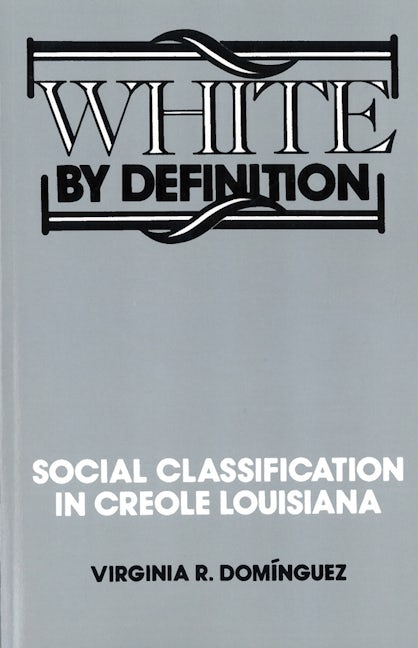Charles W. Chesnutt and the Engendering of a Post-Reconstruction Multiracial PoliticsPosted in Articles, History, Literary/Artistic Criticism, Media Archive, Politics/Public Policy, Social Science, United States on 2011-03-06 23:25Z by Steven |
Charles W. Chesnutt and the Engendering of a Post-Reconstruction Multiracial Politics
The Conversation
Number 2 (2009-2010)
Once a promising fiction writer and would-be spokesman for African-Americans, Charles W. Chesnutt promoted a form of multiracialism but is largely forgotten today. Kirin Wachter-Grene traces the development of Chesnutt’s ideas about the amalgamation of races and their afterlife in the 21st century.
Introduction: The Roots of Multiracialism
Multiracialism, as the movement, academic field, and media discourse has come to be known, is a politics that is both controversial and particularly apropos to our contemporary moment in which terms like “post-racial” are frequently used in public discourse in reference to the era of President Obama and to the cultural climate in general. Multiracialism should not be confused with multiculturalism. Where multiculturalism generally promotes the acceptance of divergent people and cultures for the sake of diversity, multiracialism maintains a decidedly conservative agenda of colorblind ideology that strives to blur the color line at the expense of racialized (particularly black) politics, culture, and identity. (I say particularly black because, as critics have long argued, blackness is one of the most, if not the most explicitly, racialized identities in the United States). The driving force behind multiracialism is not a celebration of racial and ethnic diversity, but rather a disappearing of this diversity and a supposed de-emphasis of race. Despite its idealized intentions, what multiracialism tends to achieve is a re-emphasis of rigid racial classifications by subsequently “othering” those who cannot “transcend” race. The politics of multiracialism can only apply to the people who are privileged enough to be seen as, or who see themselves as, “race neutral” or crossover figures, or as racially ambiguous. It does little to affect the lived realities of those whom society still continues to stereotype and demonize on a daily basis as a result of their explicit racialization, or identifiable racial identity. Furthermore it disregards and de-legitimizes people who choose to identify with, and take pride in their race or ethnicity, whatever that means to them.
Conceptions of a multiracial politics, a “mestizo” (“mixed”) America (as it is called in such politics), or a post-racial, “colorblind” culture is not an idea endemic to the late 20th century, although cultural critics, like Jared Sexton, have recently suggested it to be so. In his new book Amalgamation Schemes: Antiblackness and the Critique of Multiracialism, Sexton locates his argument concerning multiracialism within the last thirty years, referring to it as a “decidedly post-civil rights era phenomenon,” (p. 1, italics author’s own). This is partly because Sexton bases his argument on the careful consideration of the rhetoric of contemporary multiracialists, such as Charles Byrd, the founding editor of Interracial Voice, and writers Randall Kennedy, Gregory Stephens, and Stephen Talty to name a few. While it is true that multiracialism as a politics has benefited greatly from the civil rights movement of the 1960s, in that a space was created for this kind of cultural discourse, the anxieties inherent to it are much older, and can readily be traced to some of the literature produced during an inchoate period in the history of the United States—the end of the nineteenth and beginning of the twentieth centuries. This literature, in which themes of multiracialism, “miscegenation” (i.e. an antiquated and offensive term for interracial reproduction), and calls for a homogenous national identity are explicit, reveals nothing if not the socio-political debates and struggles for subjectivity that continue to obsess our culture today.
One of the most understudied and provocative American authors of the era, Charles W. Chesnutt, was publishing essays and fiction from 1881 to 1931. This was a time in which the country was struggling to articulate its burgeoning identity in everything from politics and imperialism to concepts of sexuality, class, race, and ethnicity. The Reconstruction and post-Reconstruction years in particular seemed to be consumed with an existential crisis as to what the nation was and who its citizens were, and a palpable fear that the unification of the country could once again disintegrate without rigid social and political classifications. Chesnutt’s work in particular provides an excellent example with which to think about the developing ideas of race, subjectivity, community, and nationality, because his work, perhaps more so than any other author’s work at the time, is rather strange, controversial, and challenging.
Chesnutt was a man of mixed race and white enough to “pass,” but he chose to identify himself as black and affiliate himself with the problem of race prejudice. While Chesnutt was a “civil rights activist, literary artist, student of social history, educator, business man, and cultural savant,” (Charles W. Chesnutt: Essays and Speeches. p. xxxvi), he was also a multiracialist, and his politics were not always, if at all, articulated in the best interest of the advancement of the black community for the sake of itself. Most notably, several of his essays do not shy away from advocating total racial amalgamation as the solution to the “Negro Problem,”—he argues for “miscegenation” to be enacted to the point of racial obliteration, an idea echoed by contemporary multiracialists. While Chesnutt advocated these ideas blatantly in several of his speeches and essays, he had a difficult time constructing a cohesive rhetoric, demonstrated by his struggles to rationalize his politics within his fiction. In other words, while his explicit amalgamation essays boldly take one tone, his fiction is much more ambiguous as he experimented with different “solutions” to race antagonism. His curious literature combined with the historical moment at which he was publishing, make for rich material with which to think about both Chesnutt’s particular authorial anxieties and the tensions inherent in these issues as they relate to our current politics…
Read the entire essay here.
